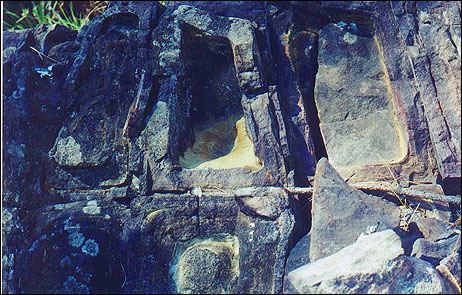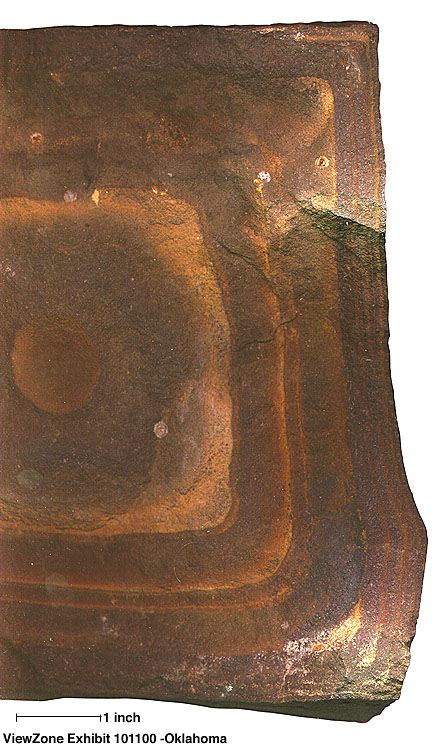Posted on 04/10/2006 2:58:26 PM PDT by SunkenCiv
Some 30 kilometers south of Lake Taupo, in New Zealand, stands an enigmatic array of stone blocks. It "looks" like a wall; a human-built wall. It also "looks" old; perhaps 2,000 years old according to some... B. Brailsford, of Christchurch, has been the chief investigator of the Kaimanawa wall, aided by American D.H. Childress, and others. The stones that make up the wall are 4-ton blocks of ignimbrite, a soft volcanic rock that could have been easily dressed with stone tools. The wall is topped by a red beech tree 2.9 meters in circumference and over a meter of accumulated humus... Supporting the contention that a pre-Maori people lived in New Zealand are the bones of the kiore, a type of rat alien to New Zealand, which was likely introduced by the first settlers. Some kiore bones have been dated as 2,000 years old -- centuries before the first Maoris arrived.
(Excerpt) Read more at science-frontiers.com ...
Cracks In The Kaimanawa-wall Story?It was bound to happen. The publicity accorded the Kaimanawa Wall by New Zealand newspapers (SF#107) stimulated the scientific community to take a close look at the controversial "wall." The New Zealand Department of Conservation asked geologist P. Wood for his assessment.
by William R. Corliss
Mar-Apr 1997
"He identified the rock as the 330,000-year-old Rangitaiki Ignimbrite. Following the line of blocks both horizontally and vertically, and photographing them in series, he revealed a system of joints and fractures natural to the cooling process in ignimbrite sheets. What Brailsford [see SF#107] had taken to be manmade cut, stacked blocks were no more than a type of natural rock formation."
P. Andrews, the author of this article likened the regular jointing of the "wall" to neatly hexagonal prisms seen in many basalt flows. He supplied two photographs of the "wall." One was like the photo in SF#107 and showed regular joints; the second, from the same outcrop, displayed angled fractures and joints that certainly do not look like the work of humans.The Experts Challenged..."Barry and I discussed the possibility that the geologist had made a wrong call, and we sent a small sample of stone from the wall to an Auckland laboratory for further analysis. Tests revealed that the stone was in fact rhyolite which does not naturally occur on the eastern side of Lake Taupo. Further research indicated that the nearest rhyolite deposits are to be found at least 10 miles distance from the wall.
Mysterious New Zealand
Mar 01, 2005
Based on this information, it could appear that stone was cut in situ and moved to the present site from further in the Kaimanawa Forest. It is now assumed that the wall is the only visible part of much greater structure buried under the volcanic ash of the 232AD eruption which formed Lake Taupo..."
Hmmmm. (bump)
I think it's natural. At 330,000 years old, there has been plenty of time for trees to jam their roots down in the cracks. :') Still interesting though.

more pics on this link, fascinating, like certain spherical boulders, the 'bricks' are hollow and filled with sand...similar have been discovered in Australia but I lost the link...

UPDATE: AUGUST 01, 2001
Our crew is currently in South Australia near the Flinder's Range. They are awaiting good weather so that they can visit the location of similar rock formations. Reports and photos will be posted soon.
June 2001: The sample of rock material sent to Viewzone from the Oklahoma site was successfully analyzed by the University of Massachusetts' GeoSciece lab. The interior is made of aggregate quartz while the "shell" is rich in iron. Natural or created? New data to be revealed soon.
http://www.viewzone.com/VIEW.ZONE.com
Yup. I think so.

http://community-2.webtv.net/AncientSuns/Structures2/ | Similar, Australia.
Similar, Australia.
http://www.viewzone.com/rocks.oz.html
found the follow up - natural causes...not that the Lebanese muslims will believe it, they are writing their own mythos; Phoenician sailors discovered Australia - therefor the Land Down Under belongs to islam. (blech)
Disclaimer: Opinions posted on Free Republic are those of the individual posters and do not necessarily represent the opinion of Free Republic or its management. All materials posted herein are protected by copyright law and the exemption for fair use of copyrighted works.